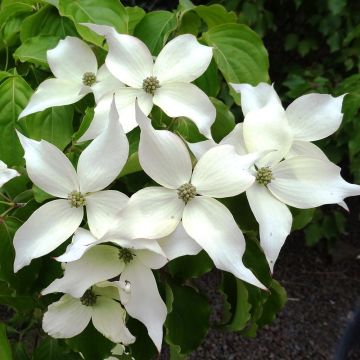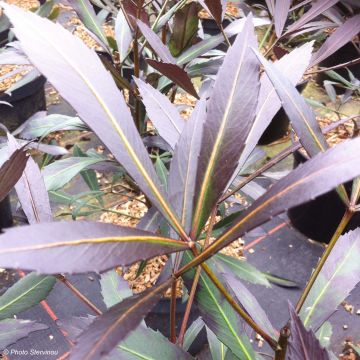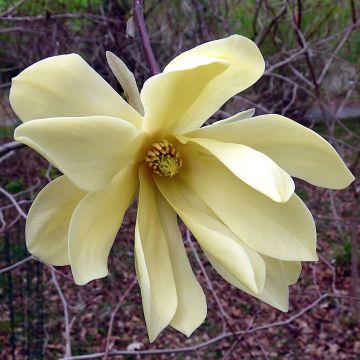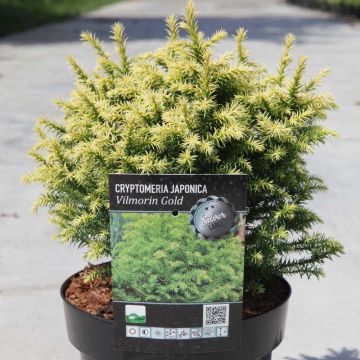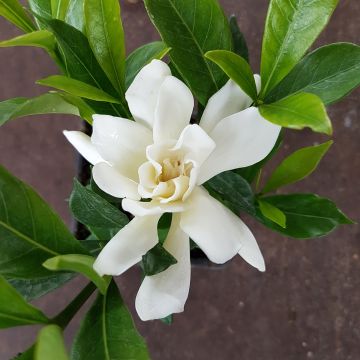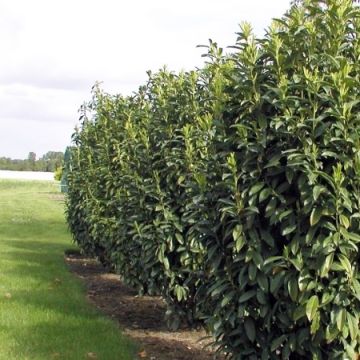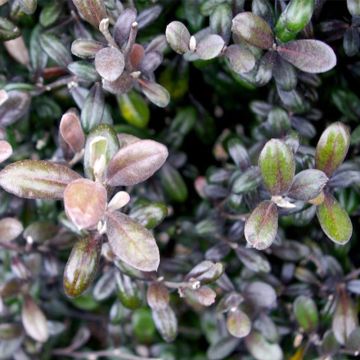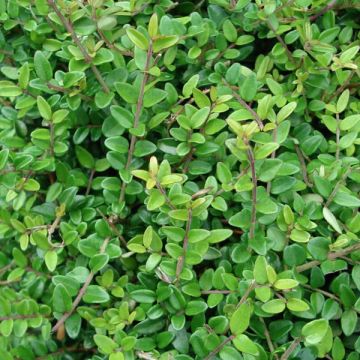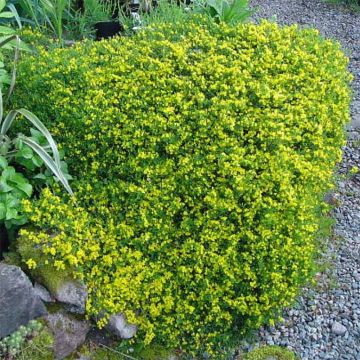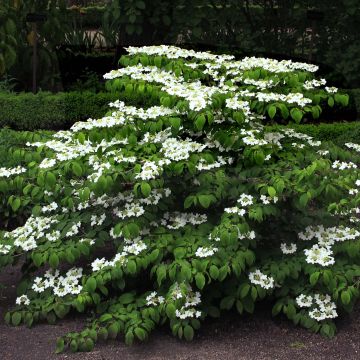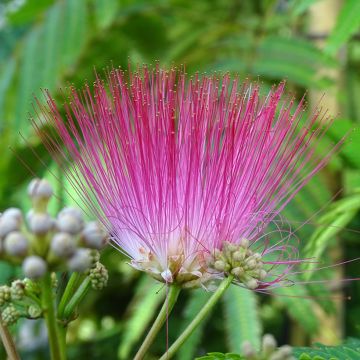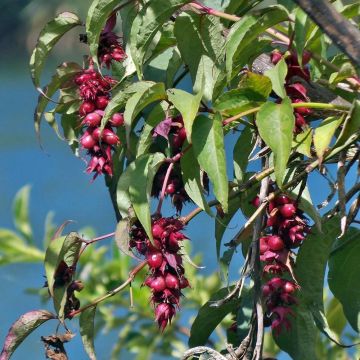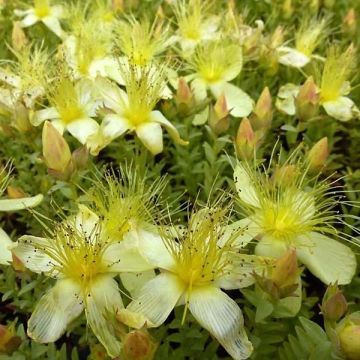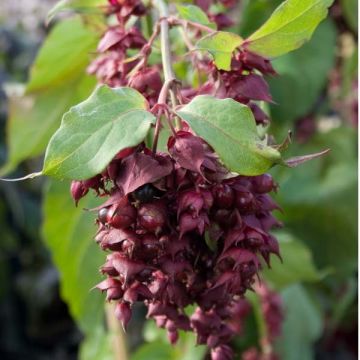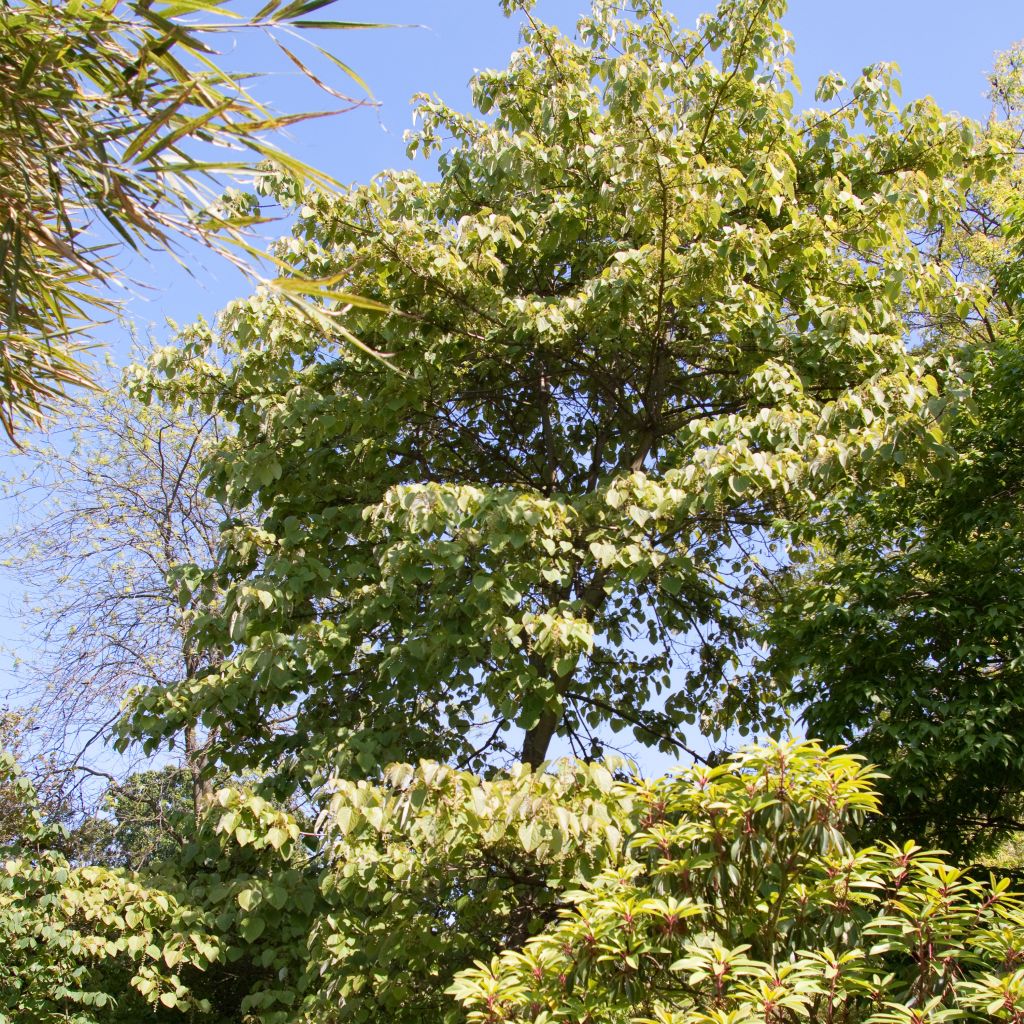

Idesia polycarpa
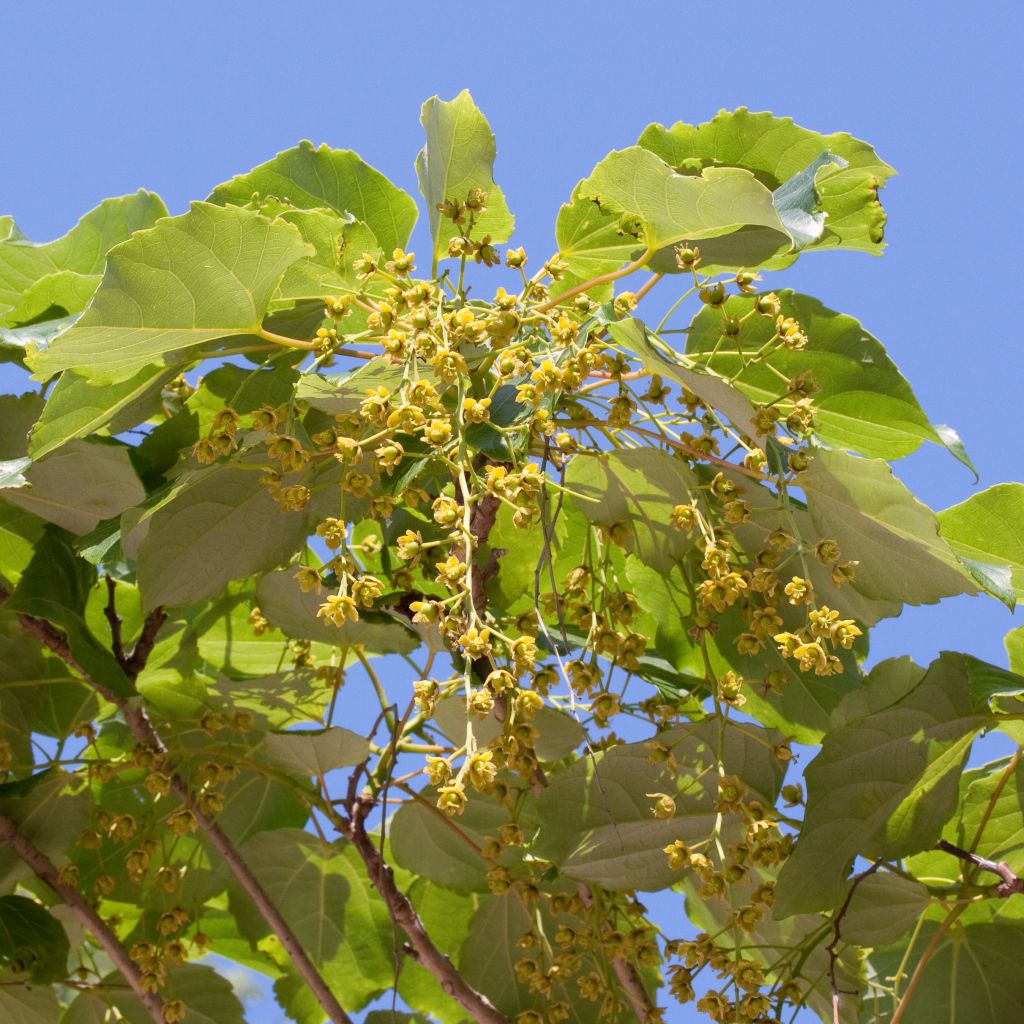

Idesia polycarpa
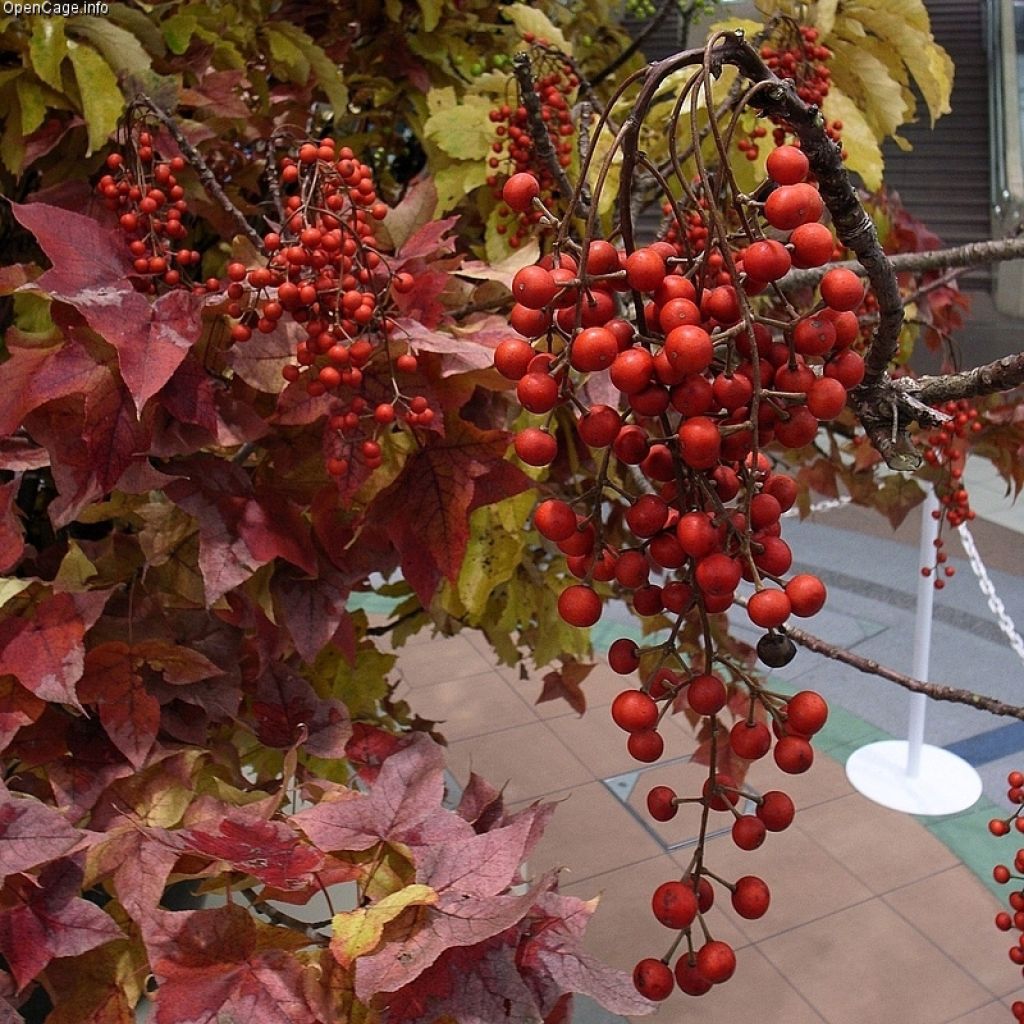

Idesia polycarpa
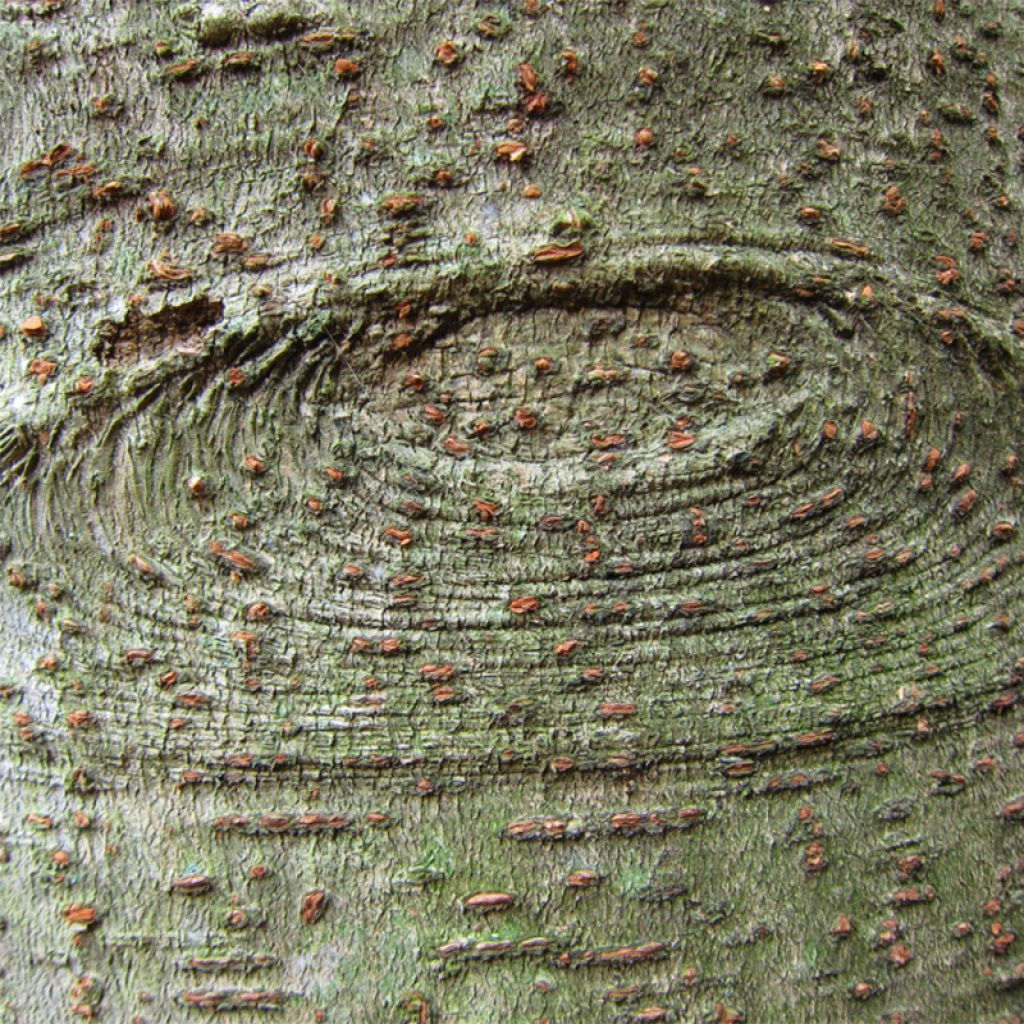

Idesia polycarpa
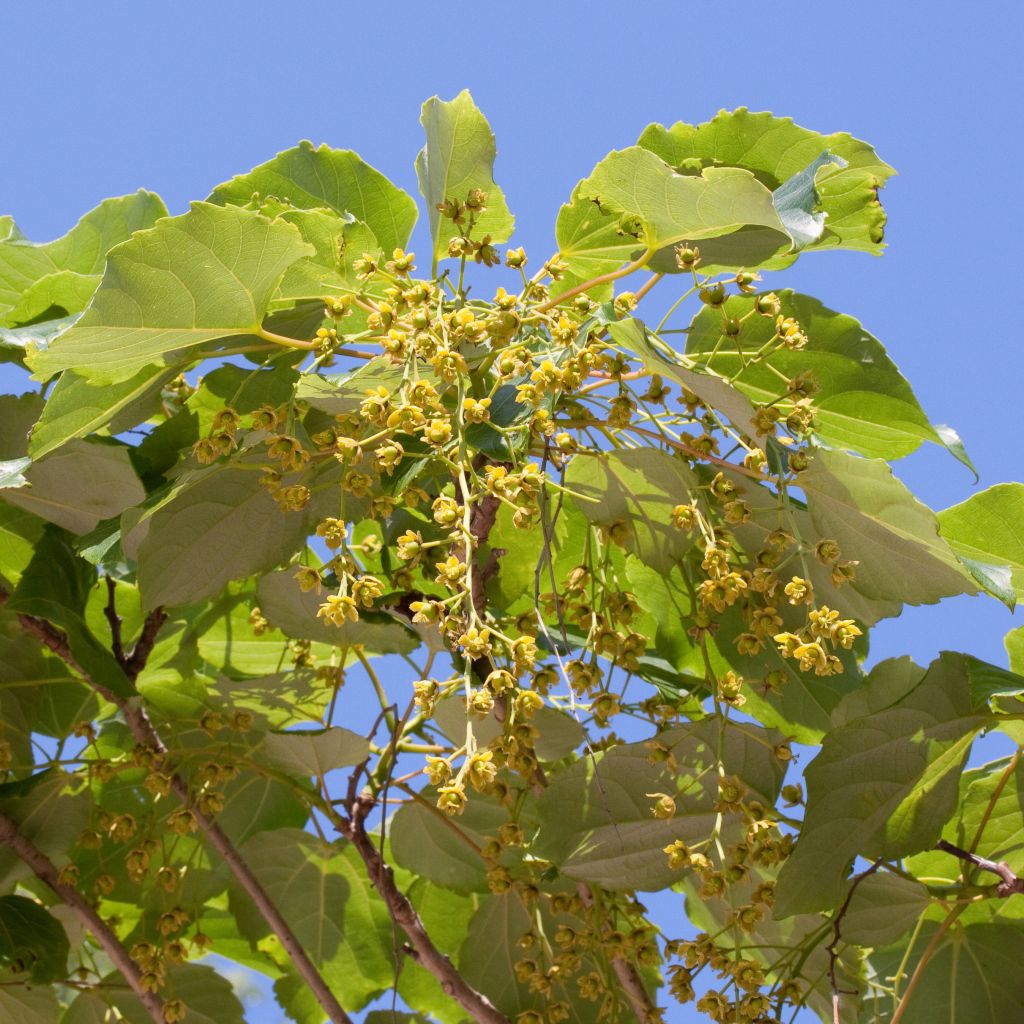

Idesia polycarpa
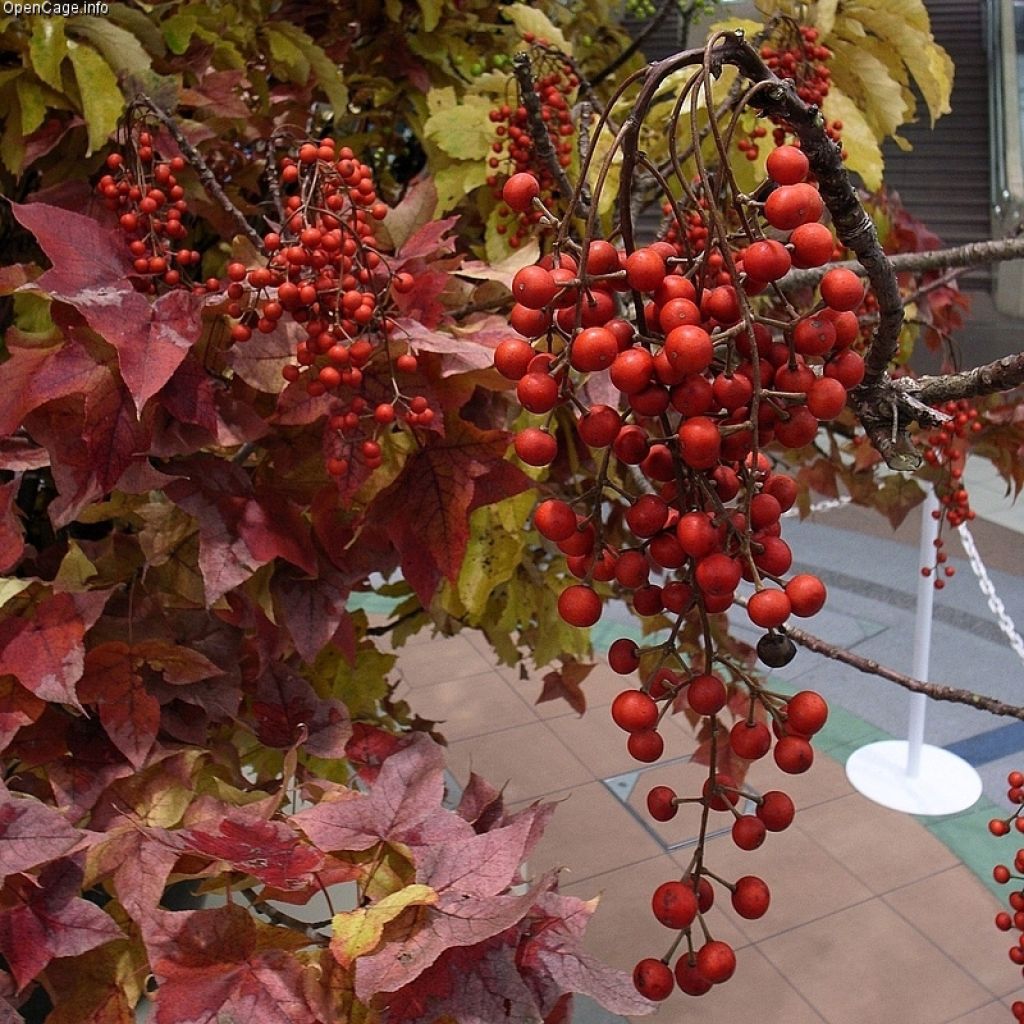

Idesia polycarpa
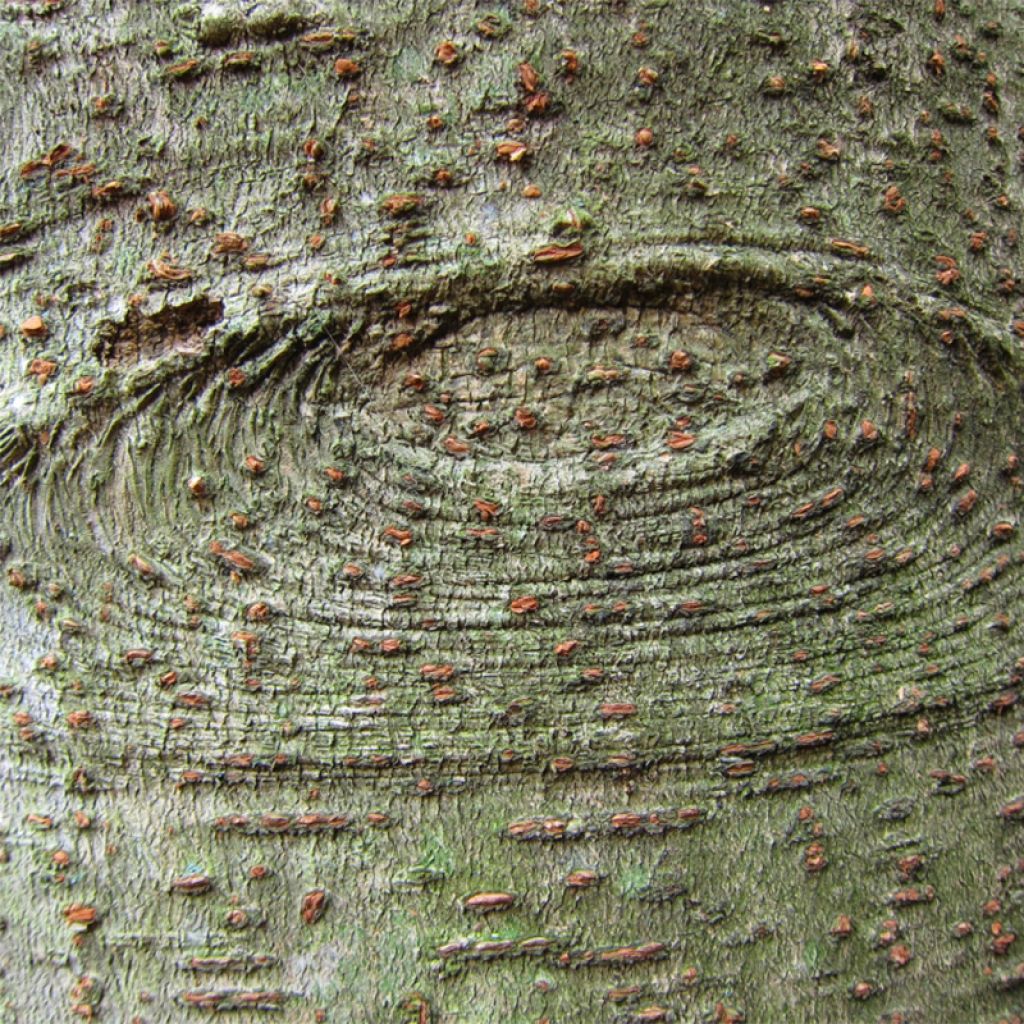

Idesia polycarpa
Idesia polycarpa
Idesia polycarpa
Igiri tree
This item cannot be shipped to the selected country
Delivery charge from €5.90
More information
Schedule delivery date,
and select date in basket
This plant carries a 24 months recovery warranty
More information
We guarantee the quality of our plants for a full growing cycle, and will replace at our expense any plant that fails to recover under normal climatic and planting conditions.
From €5.90 for pickup delivery and €6.90 for home delivery
Express home delivery from €8.90.
Does this plant fit my garden?
Set up your Plantfit profile →
Description
Idesia polycarpa, a unique species, is a beautiful deciduous tree of medium size, with a beautiful silhouette and splendid foliage. Its large, dark green, heart-shaped leaves provide a clear and pleasant shade. In early summer, it is adorned with pendulous panicles of small yellow-green flowers with a sweet fragrance. Following this flowering, clusters of bright red berries appear and persist throughout much of the winter. Male and female trees must be planted together to achieve fragrant flowering and fruiting. A superbly decorative and ornamental tree, with an exotic appearance, to invite into the garden for a Japanese atmosphere!
Idesia polycarpa is a beautiful deciduous tree of medium size, with rapid growth and an elegant silhouette. It is native to the forests of central and western China, Korea, Japan, and Taiwan, and belongs to the Salicaceae family.
It is characterized by a widely conical crown, a spreading habit, and well-ventilated, horizontal branches. It reaches a height of about 12m (39ft 5in) with a spread of 8m (26ft 2in). Its straight trunk, not exceeding 50cm (19.7in) in diameter, has a smooth, white bark in young specimens and a greenish-grey bark with very tight lenticels in older trees. It displays a beautiful glossy foliage, light green in spring and then a beautiful dark green, with a glaucous underside. Its foliage takes on lovely pale yellow hues in autumn. The large, heart-shaped leaves, 10 to 20cm (7.9in) long, slightly dentate, are carried by long purple petioles, creating a superb contrast with the autumn yellow. From May to July, hanging clusters of small yellow-green, fragrant flowers appear. These large panicles measure 10 to 20cm (7.9in) long.
Plant a male and a female specimen to obtain fruiting after flowering. The male flowers have numerous stamens, as long as the sepals, and are larger than the female flowers, but the latter are fragrant. After pollination carried out by pollinating insects, the female inflorescences give way to large pendulous clusters of spherical purplish-red berries, particularly decorative, which persist on the tree throughout much of the winter, enlivening and colouring the garden during the dull season. Its fruits are edible, both raw and cooked.
This tree is particularly ornamental and decorative, with its foliage, fragrant summer flowering, and remarkable winter fruiting. Idesia polycarpa should be planted in a sunny or semi-shaded position in the garden, in a rather rich, neutral to acidic, well-drained and moist soil. Providing a beautiful, light and clear shade, it offers various uses in terms of placement and utilization. It can be placed as a solitary tree, but also under the canopy of larger trees, or even in association with a shrub grove. Perennial plants that thrive in partial shade will find their place at its base, as well as spring or summer flowering bulbs. Its medium size makes it well-suited for small gardens. Of Asian origin, it fits perfectly in a Japanese or exotic-style garden.
Report an error about the product description
Idesia polycarpa in pictures
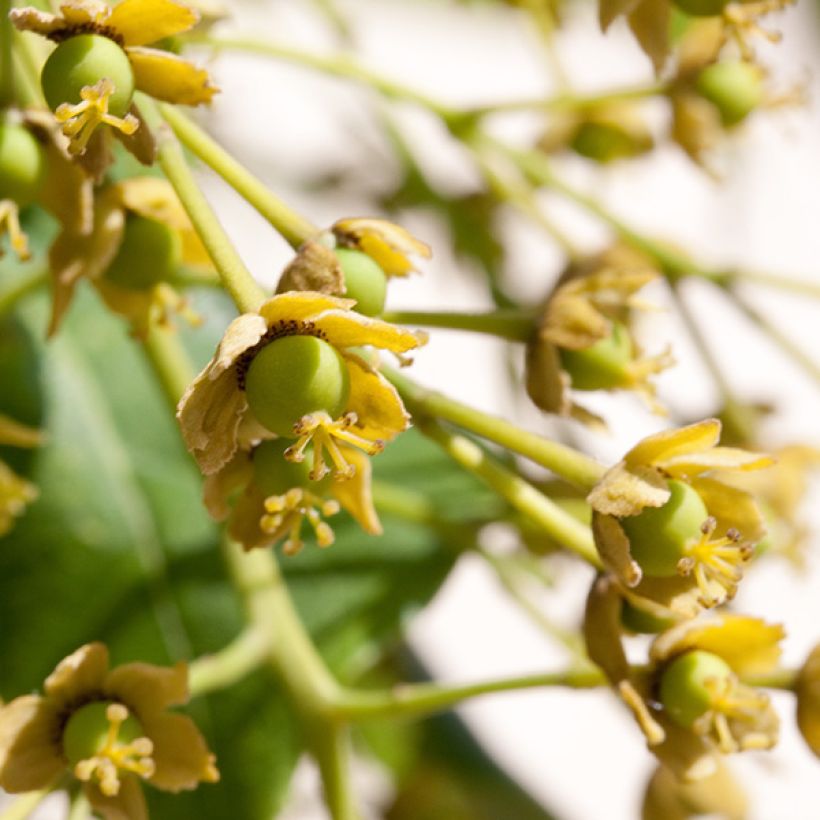

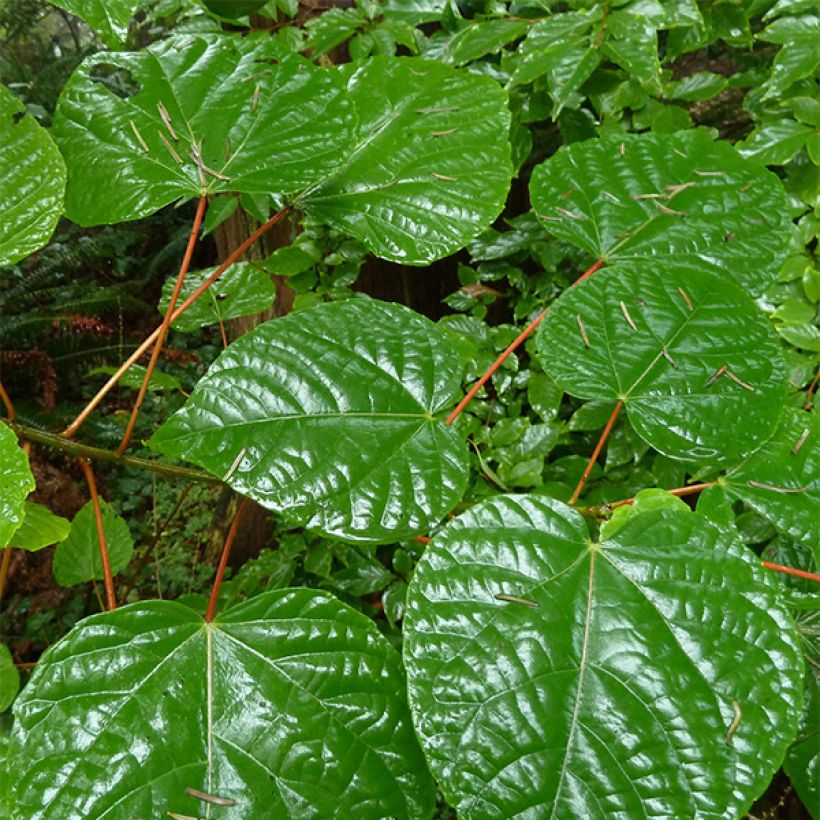

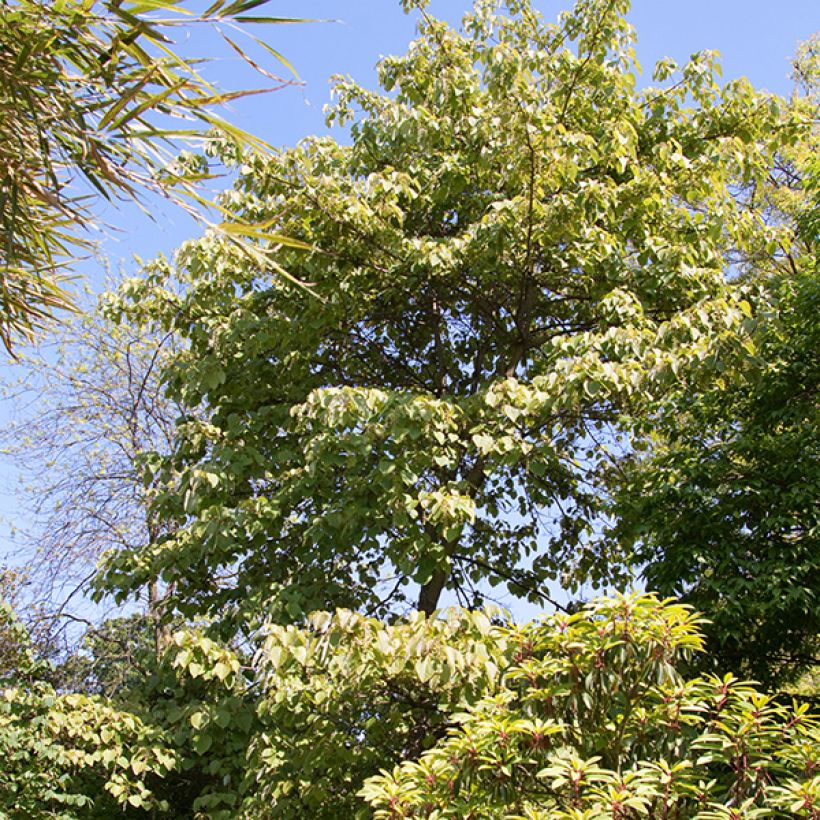

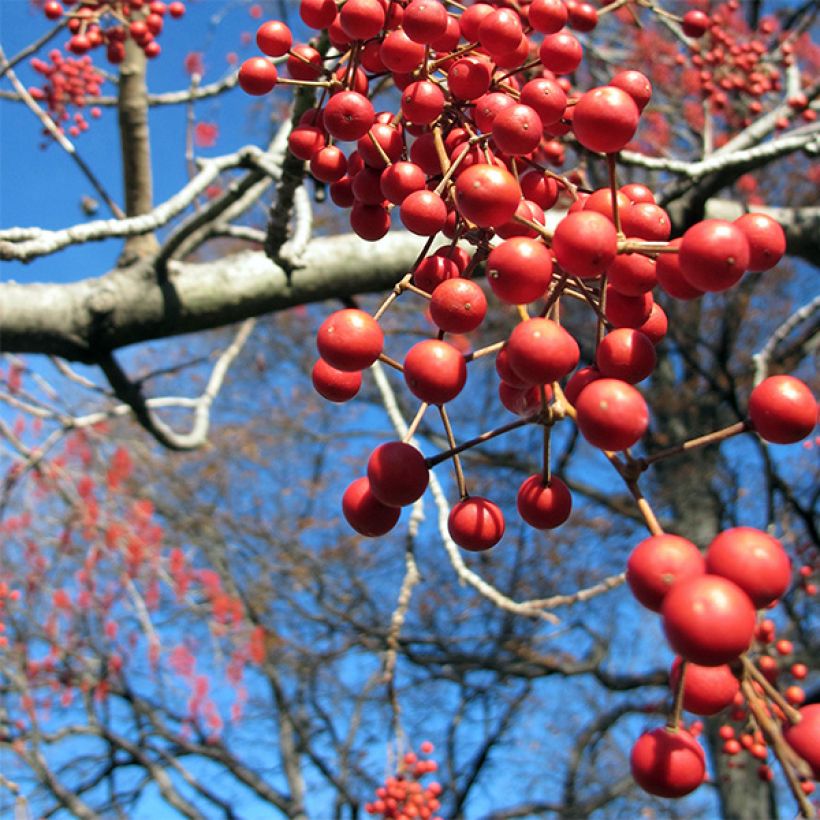

Plant habit
Flowering
Foliage
Botanical data
Idesia
polycarpa
Salicaceae
Igiri tree
Southeast Asia
Other Shrubs A to Z
Planting and care
Idesia polycarpa is a tree with good hardiness, tolerating temperatures down to -15°C, but its young shoots can sometimes be damaged by late frosts. After a long and hot summer, it will be more robust and resistant to winter cold, as the heat allows its wood to harden. It appreciates a sunny or partially shaded exposure, as well as a neutral to slightly acidic, fairly fertile, moist and cool, but well-drained soil. Planting can be done in spring or autumn.
Planting period
Intended location
Care
-
, onOrder confirmed
Reply from on Promesse de fleurs
Summer-flowering shrubs
Haven't found what you were looking for?
Hardiness is the lowest winter temperature a plant can endure without suffering serious damage or even dying. However, hardiness is affected by location (a sheltered area, such as a patio), protection (winter cover) and soil type (hardiness is improved by well-drained soil).

Photo Sharing Terms & Conditions
In order to encourage gardeners to interact and share their experiences, Promesse de fleurs offers various media enabling content to be uploaded onto its Site - in particular via the ‘Photo sharing’ module.
The User agrees to refrain from:
- Posting any content that is illegal, prejudicial, insulting, racist, inciteful to hatred, revisionist, contrary to public decency, that infringes on privacy or on the privacy rights of third parties, in particular the publicity rights of persons and goods, intellectual property rights, or the right to privacy.
- Submitting content on behalf of a third party;
- Impersonate the identity of a third party and/or publish any personal information about a third party;
In general, the User undertakes to refrain from any unethical behaviour.
All Content (in particular text, comments, files, images, photos, videos, creative works, etc.), which may be subject to property or intellectual property rights, image or other private rights, shall remain the property of the User, subject to the limited rights granted by the terms of the licence granted by Promesse de fleurs as stated below. Users are at liberty to publish or not to publish such Content on the Site, notably via the ‘Photo Sharing’ facility, and accept that this Content shall be made public and freely accessible, notably on the Internet.
Users further acknowledge, undertake to have ,and guarantee that they hold all necessary rights and permissions to publish such material on the Site, in particular with regard to the legislation in force pertaining to any privacy, property, intellectual property, image, or contractual rights, or rights of any other nature. By publishing such Content on the Site, Users acknowledge accepting full liability as publishers of the Content within the meaning of the law, and grant Promesse de fleurs, free of charge, an inclusive, worldwide licence for the said Content for the entire duration of its publication, including all reproduction, representation, up/downloading, displaying, performing, transmission, and storage rights.
Users also grant permission for their name to be linked to the Content and accept that this link may not always be made available.
By engaging in posting material, Users consent to their Content becoming automatically accessible on the Internet, in particular on other sites and/or blogs and/or web pages of the Promesse de fleurs site, including in particular social pages and the Promesse de fleurs catalogue.
Users may secure the removal of entrusted content free of charge by issuing a simple request via our contact form.
The flowering period indicated on our website applies to countries and regions located in USDA zone 8 (France, the United Kingdom, Ireland, the Netherlands, etc.)
It will vary according to where you live:
- In zones 9 to 10 (Italy, Spain, Greece, etc.), flowering will occur about 2 to 4 weeks earlier.
- In zones 6 to 7 (Germany, Poland, Slovenia, and lower mountainous regions), flowering will be delayed by 2 to 3 weeks.
- In zone 5 (Central Europe, Scandinavia), blooming will be delayed by 3 to 5 weeks.
In temperate climates, pruning of spring-flowering shrubs (forsythia, spireas, etc.) should be done just after flowering.
Pruning of summer-flowering shrubs (Indian Lilac, Perovskia, etc.) can be done in winter or spring.
In cold regions as well as with frost-sensitive plants, avoid pruning too early when severe frosts may still occur.
The planting period indicated on our website applies to countries and regions located in USDA zone 8 (France, United Kingdom, Ireland, Netherlands).
It will vary according to where you live:
- In Mediterranean zones (Marseille, Madrid, Milan, etc.), autumn and winter are the best planting periods.
- In continental zones (Strasbourg, Munich, Vienna, etc.), delay planting by 2 to 3 weeks in spring and bring it forward by 2 to 4 weeks in autumn.
- In mountainous regions (the Alps, Pyrenees, Carpathians, etc.), it is best to plant in late spring (May-June) or late summer (August-September).
The harvesting period indicated on our website applies to countries and regions in USDA zone 8 (France, England, Ireland, the Netherlands).
In colder areas (Scandinavia, Poland, Austria...) fruit and vegetable harvests are likely to be delayed by 3-4 weeks.
In warmer areas (Italy, Spain, Greece, etc.), harvesting will probably take place earlier, depending on weather conditions.
The sowing periods indicated on our website apply to countries and regions within USDA Zone 8 (France, UK, Ireland, Netherlands).
In colder areas (Scandinavia, Poland, Austria...), delay any outdoor sowing by 3-4 weeks, or sow under glass.
In warmer climes (Italy, Spain, Greece, etc.), bring outdoor sowing forward by a few weeks.

































